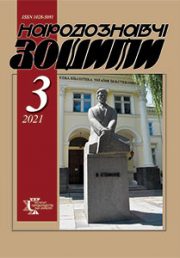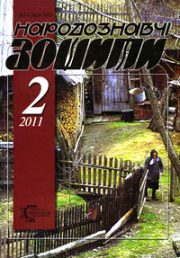The Ethnology Notebooks. 2017, 6 (138), 1542—1548
UDK 75.046(477)”10/17″:2736 D. Solunskij
DOI https://doi.org/10.15407/nz2017.06.1542
Received 26.10.2017
THE IMAGE OF ST. DEMETRIUS IN UKRAINIAN ART OF XI—XVIII CENTURY: ICONOGRAPHY AND ART FEATURES
Moskal Marta, postgraduate student
at the Lviv National Academy of Arts,
research fellow at the Lviv’s branch NNDRCU
Kubiiovych Str., 38, Lviv, 79011, Ukraine
Contacts: Tel. (032) 2761482, e-mail: aspirantura@lnam.edu.ua
Abstract.Images of Ukrainian art with the depiction of Demetrius of the Thessaloniki are examined in the article. Based on the analysis of twentyseven works of art it is found basic iconographic types of images and its transformation over the centuries; highlighted the artistic features, ideological and semantic content of images with the depiction of St. Demetrius in art.
Keywords: Saint warrior, martyr, iconography, the image of St. Demetrius.
REFERENCES
Alpatov, M. (1978). Drevnerusskaja ikonopis’. Moskva : Iskusstvo. [in Russian]
Gajdin, S. (1923). Reznaja shifernaja ikona sv. Dimitrija i Georgija. Sbornik GE, 2, 31—42. [in Russian]
Helytovych, M. (2014). Ukrains’ki ikony XIII — pochatku XVI st. zi zbirky Natsional’noho muzeiu u L’vovi imeni Andreia Sheptyts’koho. Kyiv : Majster knyh. [in Ukrainian]
Zhyshkovych, V. (1999). Plastyka Rusi-Ukrainy: X — persha polovyna XIV stolit’. L’viv: Instytut narodoznavstva NAN Ukrainy. [in Ukrainian]
Zholtovs’kyj, P. (1982). Maliunky Kyievo-Pechers’koi lavry. Kyiv : Naukova dumka. [in Ukrainian]
Ivanova, O. (2007). Dimitrij Solunskij. Muchenichestva. Moshhi i mirotochenie. Skazanija o chudesah. Pochetanie v Vizantii. In Pravoslavnaja enciklopedija (Vol. 15, pp. 155—168). Moskva : Cerkovnonauchnyj centr “Pravoslavnaja enciklopedija”. [in Russian]
Ivanova, O. (1995). Chudesa sv. Dimitrija Solunskogo. In Svod drevnejshih pis’mennih izvestij o slavjanah VII—IX vv. (Vol. 2, pp. 91—211). Moskva. [in Russian]
Katrij, Yu. (2004). Piznaj svij obriad. L’viv : Svichado. [in Ukrainian]
Lazarev, V. (2000). Russkaja ikonopis’ ot istokov do nachala XVI veka. Moskva : Iskusstvo. [in Russian]
Asieiev, Yu. (Ed.) (1989). Mystetstvo Kyivs’koi Rusi: al’bom. Kyiv : Mystetstvo. [in Ukrainian]
Ovsijchuk , V. (1996). Ukrains’ke maliarstvo X-XVIII stolit’: Problemy kol’oru. L’viv : Instytut narodoznavstva NAN Ukrainy. [in Ukrainian]
Otkovych, V. (1999). Ukrains’ka ikona XIV-XVIII st. L’viv : Svitlo i Tin’. [In Ukrainian]
Patriarkh Dymytrij (Yarema). (2005). Ikonopys Zakhidnoi Ukrainy XII—XV st. L’viv: Drukars’ki kunshty. [in Ukrainian]
Preobrazhenskij, A. (2007). Dimitrij Solunskij. In Pravoslavnaja enciklopedija. Moskva : Cerkovnonauchnyj centr “Pravoslavnaja jenciklopedija”. [in Russian]
Rychka, V. (2012). Vizantijs’ki pokhody Kyivs’kykh kniaziv v istorychnij pam’iati skhidnoho slov’ianstva. Ukrains’kyj istorychnyj zhurnal, 4, 4—20. [in Ukrainian]
Smyrnova, E. (2007). Ikonohrafija zhytiia sv. Dimitrija Solunskoho: jejo obnovlenije v russkoj ikonopisi kontsa XVII — nachala XVIII veka. Zbornik radova Vizantoloshkoh instituta, 44(2), 614—625. [in Serbian]
Stepovyk, D. (1996). Istoriia ukrains’koi ikony X—XX st. Kyiv : Lybid’. [in Ukrainian]
Turylov, A. Dymytryj Solunskyj. Pochytanye u iuzhnykh slavian i na Rusi. In Pravoslavnaia entsyklopedyia (Vol. 15, pp. 168—174). Moskva : Tserkovnonauchnyj tsentr «Pravoslavnaia entsyklopedyia». [in Russian]
Yanov, D. (2012). Slov’ians’ki pereklady zhytiia Dymytriia Soluns’koho ta ikh vplyv na poshyrennia kul’tu sviatoho v Ukraini. Aktual’ni problemy vitchyznianoi ta vsesvitn’oi istorii, 15, 166—172. [in Ukrainian]






